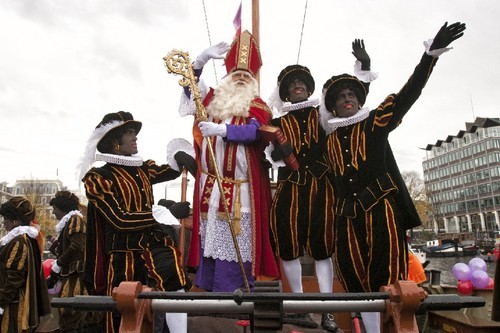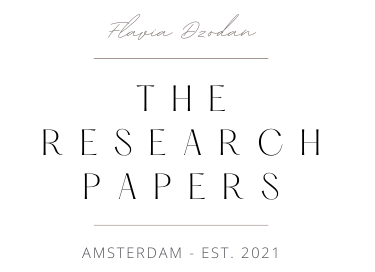The Dutch “pillars of racism”

Tomorrow is the “arrival of Sinterklaas” in The Netherlands and Belgium. The arrival marks the beginning of the festive season that ends with children receiving presents on December 5th. In time, December 5th officially opens the Christmas season in The Netherlands and Belgium. What this means, in practical terms is that we have reached peak racism on Dutch social media. The racists are loud and proud because “they won” (meaning, the character of Zwarte Piet has remained unchanged for another year).
However, I am more interested in the self proclaimed “non racists” than I am in the vocal trolls (really, how many times can I hear a slur before the impulse to analyze it dies off?). The self proclaimed “non racists” are the biggest hindrance to dismantling any white supremacist institution in this country; even more so than the loud vocal ones because for them, there is no problem to fix. “This is a non racist country”, they claim. The gaslighting is maddening (and I do not use this word lightly, I truly believe this gaslighting is at the root of many mental health issues experienced by People of Color).
In order to understand this sad state of affairs and the vehement refusal for change, I think it is important to go back in Dutch history. Namely, to point at two institutions that are at the root of present day problems: “pillarisation” and the polder model. Since mid 19th century, politics in The Netherlands were ruled by a rigid system of “pillars”. These “pillars” represented the different ideologies and their subsequent political representation. Basically, there were Protestants, Catholics, Socialists and “freethinkers”. Abdulkader Tayob writes:
The Modern history of The Netherlands is characterized by a pillarization (verzuiling) of society around confessional religious groups. This meant that the modern social institutions (schools, political parties, hospitals and even newspapers) were founded around a particular confessional group. Such institutions played a central role in the further development of the society and its individuals. They assisted the group and the individuals to achieve their rights and take their responsible positions in society. The pillarization of the society has broken down since the 1960s, but their remnants and symbols remain.
It should be noted that this is a very simplified definition of what pillarization meant and how it deeply shaped Dutch society. For a more in depth analysis, read the whole article. As Abdulkader Tayob notes, pillarization started to die off (at least at institutional level) around the late 1960s. In turn, it was replaced by another political framework known as “the polder model”. The polder model is (to define it in, yet again, simple terms) a consensus-based economic and social policy making system. Within the polder model, union representatives, political parties and the government agreed on the terms of social welfare policies and legislation. Within this model, everything was debatable and had to be discussed widely in order to reach consensus with the majority. This required negotiation skills and a class based representation that included vast sectors of Dutch society. The polder model is still somewhat alive, though it reached its peak in the late 90s and early 2000s during the Labor Party/ VVD coalition government of Wim Kok.
These two models (pillarization and the polder model) had one thing in common: they were white only institutions. Pillarization came to be right at the time when Black enslaved people were granted their freedom. At the time, “the former subjects of the Empire” were not even considered fully acknowledged human beings so, needless to say, there was no “pillar” for representation of their rights or interests (same applies to Indonesians who were still “subjects of the Empire” at the time). Later on, when the “polder model” came to be, the implicit agreement was that it was “for Dutch citizens and by Dutch citizens” which excluded not only the “subjects of the Empire” but also the so called “guest workers”. To quote myself:
Guest workers came from countries located in the eastern and southern regions of Europe as well as those from North Africa and Turkey. Originally, they were supposed to be temporary workers who would fill in positions deemed as “too low” for Dutch natives or to assist in reconstruction and renovation efforts after the World War II. Up to that point, nobody had seen a need for these workers to integrate as they were supposed to pack and go home as soon as the work was over. No provisions were made for them to learn the language in a proper setting, no integration into civic and/ or political life was expected from them. They were, after all, only meant to provide low cost labor. Until they weren’t anymore because they had families and children with dreams of upwards social mobility. Suddenly, they were a threat to Dutch national identity. Their cultures and habits too different. Their outfits not Western enough. Their idiosyncrasies too conservative for the mainstream idea of a Dutch liberal and tolerant society. Suddenly, politicians could appeal to a voter base increasingly fearful of this new “Other”.
For the past 150 years Dutch white people have been “debating” with one another on the best way to run the country. Everything, from social policies to media has been open for discussions where it’s been whites only deciding what constitutes and does not constitute inequality. The present day refusal of the white majority to even consider the racist nature of Zwarte Piet can be traced directly to these two models of engagement. Two models that, I must insist, never included any meaningful political representation of “the Other”. The stubborn refusal to consider racism within Dutch society, paired with the “myth of tolerance” (a myth created and perpetuated by a white only political system) is at the very root of the lack of change. Now we have to hear again and again how “there is no racism in The Netherlands” and, more to the point, the character of Zwarte Piet is “not racist”. White people still see themselves as the sole arbiters of racism and, if they feel particularly generous, they will grant us humanity by acknowledging a historical wrong. Until we have full political representation and a media that is not complicit in the perpetuation of these ideas, this is yet another reason why I do not debate.
—————————————————————————————
*
*
*
My other writings on Zwarte Piet and racism in The Netherlands from this year:
1. On White Dutch people’s “feelings”, blackface, racism, lives worth cherishing
2. An intersectional feminist approximation to aesthetics around Zwarte Piet
3. Zwarte Piet, racism and gaslighting as a culture wide phenomenon in The Netherlands
4. And here’s the interview I did yesterday with The Morning Amp
For the past decade and a half I have been making all my content available for free (and never behind a paywall) as an ongoing practice of ephemeral publishing. This site is no exception. If you wish to help offset my labor costs, you can donate on Paypal or you can subscribe to Patreon where I will not be putting my posts behind a lock but you'd be helping me continue making this work available for everyone. Thank you. Follow me on Twitter for new post updates.

